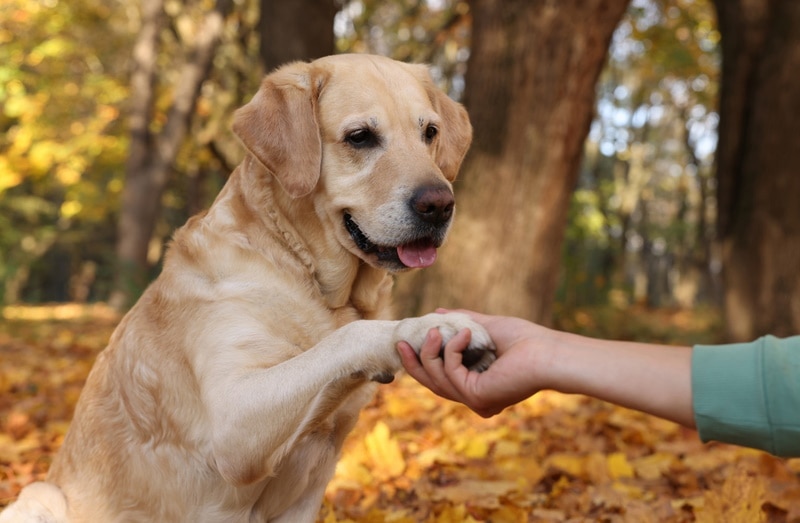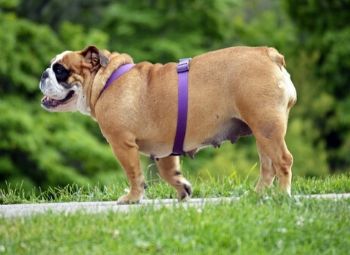4 Cavalier King Charles Spaniel Colors (With Pictures)

Updated on
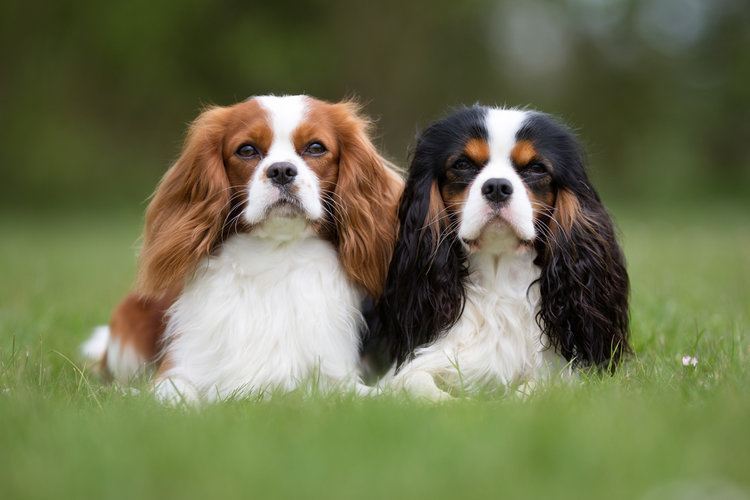
Click to Skip Ahead
Cavalier King Charles smoothly combines elegance with cuteness and has done so for centuries. There are multiple different “looks” that this pup may have, four of which are the most common.
Some people have their preference for the coat of this adorable dog, while others love them no matter the shade.
In this article, we showcase the options of coats that you can expect on these pups. We also dig into a bit of the background of the breed, as well as their characteristics and personality.
Cavalier King Charles Spaniel Color Overview
Cavalier King Charles Spaniels commonly come in four coat patterns. Two of these are called parti-color, and two of them are whole colors. Each coat pattern gives them a slightly different manner of expression and overall appearance.
The 4 coat colors are:
The 4 Cavalier King Charles Spaniel Colors
1. Blenheim Cavalier King Charles Spaniels

Due to their breeding history, the Blenheim parti-color variety is the most common coat found on a Cavalier. The primary color of the body is pure white.
Their muzzle is also typically white and smoothly transitions in a blaze up their forehead. Sometimes the white is broken up with a “Blenheim Kiss,” a blot of ruby or chestnut in the middle of the forehead.
The white is paired with chestnut or ruby markings across the body and over the ears. The exact shade depends on the breeding of the pup.
2. Tri-color Cavalier King Charles Spaniel
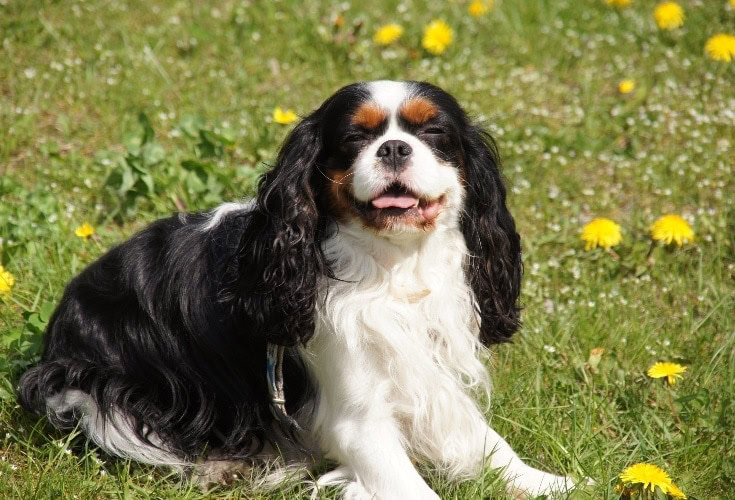
The other frequently occurring coat pattern on these little dogs is called Tricolor, accurately describing that three colors are mixed across the entire body of the dog.
Typically, white is the primary color over the body, although sometimes black will be. This dog also has ruby or chestnut spots throughout the black.
Perhaps the best part of the coloring on this variety of the pup is the ruby-colored eyebrows that make it seem more expressive than other types.
3. Ruby Cavalier King Charles Spaniel

The ruby, or chestnut, whole-colored coat on this breed is more uncommon because their breeding has not been as pursued as the other, seemingly more expressive types. These dogs are a solid shade of ruby across their bodies, sometimes with small white blemishes.
4. Black and Tan
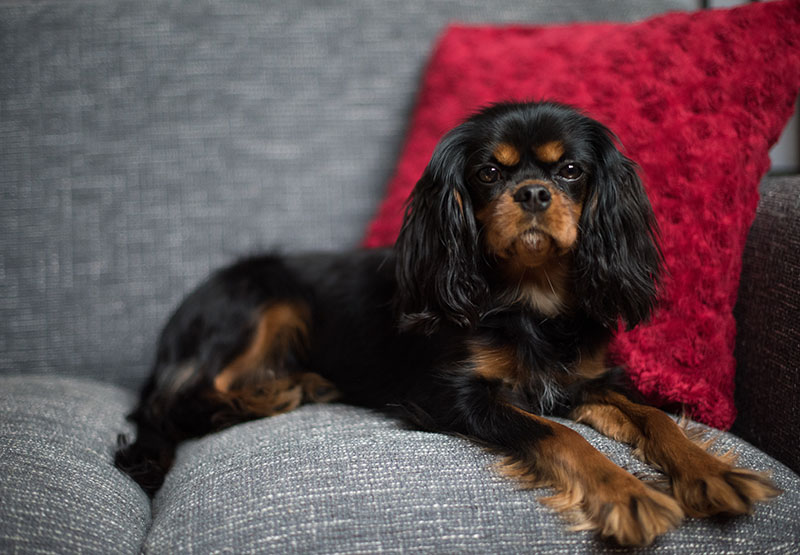
The Black and Tan parti-colored pups are said to be the rarest of the coat colors accepted by the AKC, although some people would argue that it is the Tricolor. However, the Tricolor has grown in popularity, leading to more breeding. The Black and Tans have not had such hype grow around them yet.
Black and Tan pups typically have a black body that features tan highlights around the eyebrows, cheeks, underneath their tails, and sometimes inside their ears and on their legs. If they have any white markings on them, it will be considered a fault in show dogs.
Not recognized by the AKC
The four colors mentioned above are the common coat colors for the Cavalier King Charles Spaniel, as well as the ones typically recognized by the AKC. Although other colors are elusive, they can still be found. These include:
- Chocolate tricolor
- Chocolate and tan
- All black
- Black and white
History of the Breed
Cavalier King Charles, or their predecessors, has been a dog beloved by royalty for centuries. They are the descendants of toy Spaniels that were popular during the Renaissance.
However, they became even more popular during the 17th-century, when black and tan varieties became the favorites of King Charles I and his son, Charles II. Charles II became enamored with them and was reported to worry more about his breeding projects than with ruling Britain.
This popularity among the royals made them even more popular throughout the entire aristocratic party of the team. The pups held onto this preference well into the 19th century.
One of the noble families that began to breed them was the Marlboroughs, who conducted most of the breeding and raising of the pups at Blenheim Palace. Their preference was on a line of red and white parti-color puppies, hence the name for one of the typical color patterns below.
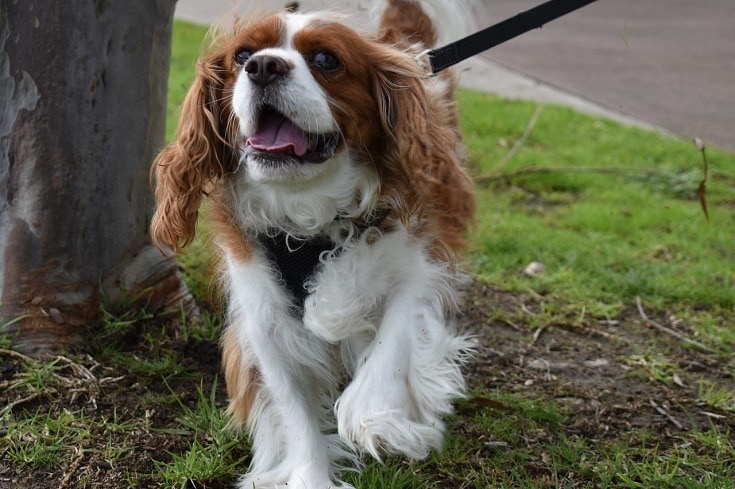
Throughout all this popularity and breeding, the toy Spaniel that became most popular during that time was similar to what we now call the King Charles Spaniel. They had a domed skull and a much flatter face than the breed that is more popular today.
Many portraits had been painted commemorating the pups throughout their noble history, and devotees in the 1920s offered a cash prize to “resurrect” the “Blenheim Spaniels of the Old World type.” These revived toy Spaniels were given the name Cavalier King Charles Spaniels.
Cavalier was inserted in the name as a historical reference to the monarchist party who supported the Stuarts during the civil war in the United Kingdom that ultimately caused Charles I to lose his head.
Defining Characteristics of Cavalier King Charles Spaniels
These dogs are known for being comforter dogs. They have soft coats of long to medium-length fur and sweet dispositions.
Beyond being well-suited as companion dogs, emotional therapy dogs, or pups for singles and seniors, their obedience helps them excel in conformation shows. They are also quite agile and can be trained to participate in agility shows.
These Spaniels can also be useful little hunting dogs. They can hunt squirrels, chipmunks, and other small animals. They are typically not trained for this unless it is a specific desire, because many other breeds excel at sporting activities.
Personality
The Cavalier King Charles Spaniel is most well-known for their incredibly sweet and affectionate personality. Finding a dog in this breed that isn’t always ready for a cuddle and one-on-one time with their family would be a feat of nature.
They are always eager to please, and although they are smart, this rarely manifests in a strong, stubborn streak. Instead, they are one of the easier dog breeds to train, and thus a good dog for first-time owners, due to their combination of intelligence and obedience.
You wouldn’t think that these dogs could get much better, but they are also quite outgoing and adaptable. You do not have to worry about the pups getting along with any other animals in the home, and they can be taken just about anywhere since they love to be around people.
Maintenance
Consistent grooming is critical for these dogs to maintain their good looks and keep them from getting severely matted.
Their coat is silky and dense. They should be brushed once a day to keep it in the best shape, but at least multiple times a week. They do not need frequent baths because these strip away oils necessary for healthy growth. If you do need to bathe them, make sure to use an appropriate shampoo formulated for dogs.
Since the pups have such long, floppy ears, it is essential to check them and clean them each week. Doing this helps keep them from getting painful ear infections. Trim their nails at least once a month.
- Related Read: How Big Does a Cavalier King Charles Spaniel Get?
Conclusion
From pristine show dogs to lovable companions, no matter what color pattern the Cavalier King Charles Spaniel comes in, they will find their way into your heart.
If you have a favorite Cavalier King Charles Spaniel color or a fun story to share about your experience with these adorable pups, please let us know!
See also:
- 200+ Names for Cavalier King Charles Spaniels: Fun & Cute Ideas
- What Are the Pros & Cons of Owning a Cavalier King Charles Spaniel?
Featured Image: BIGANDT.COM, Shutterstock




